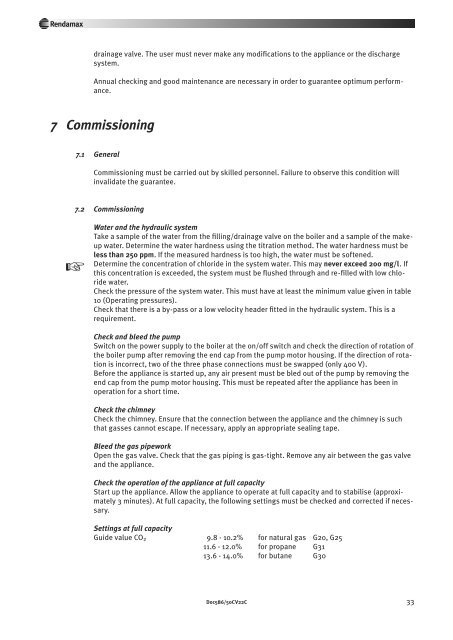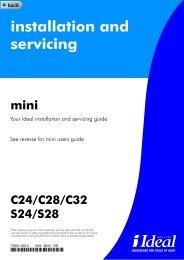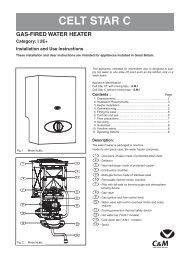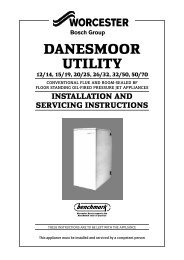sy24inst2 - The Initiative Group
sy24inst2 - The Initiative Group
sy24inst2 - The Initiative Group
Create successful ePaper yourself
Turn your PDF publications into a flip-book with our unique Google optimized e-Paper software.
Rendamax<br />
drainage valve. <strong>The</strong> user must never make any modifications to the appliance or the discharge<br />
system.<br />
Annual checking and good maintenance are necessary in order to guarantee optimum performance.<br />
7 Commissioning<br />
7.1 General<br />
Commissioning must be carried out by skilled personnel. Failure to observe this condition will<br />
invalidate the guarantee.<br />
7.2 Commissioning<br />
y<br />
Water and the hydraulic system<br />
Take a sample of the water from the filling/drainage valve on the boiler and a sample of the makeup<br />
water. Determine the water hardness using the titration method. <strong>The</strong> water hardness must be<br />
less than 250 ppm. If the measured hardness is too high, the water must be softened.<br />
Determine the concentration of chloride in the system water. This may never exceed 200 mg/l. If<br />
this concentration is exceeded, the system must be flushed through and re-filled with low chloride<br />
water.<br />
Check the pressure of the system water. This must have at least the minimum value given in table<br />
10 (Operating pressures).<br />
Check that there is a by-pass or a low velocity header fitted in the hydraulic system. This is a<br />
requirement.<br />
Check and bleed the pump<br />
Switch on the power supply to the boiler at the on/off switch and check the direction of rotation of<br />
the boiler pump after removing the end cap from the pump motor housing. If the direction of rotation<br />
is incorrect, two of the three phase connections must be swapped (only 400 V).<br />
Before the appliance is started up, any air present must be bled out of the pump by removing the<br />
end cap from the pump motor housing. This must be repeated after the appliance has been in<br />
operation for a short time.<br />
Check the chimney<br />
Check the chimney. Ensure that the connection between the appliance and the chimney is such<br />
that gasses cannot escape. If necessary, apply an appropriate sealing tape.<br />
Bleed the gas pipework<br />
Open the gas valve. Check that the gas piping is gas-tight. Remove any air between the gas valve<br />
and the appliance.<br />
Check the operation of the appliance at full capacity<br />
Start up the appliance. Allow the appliance to operate at full capacity and to stabilise (approximately<br />
3 minutes). At full capacity, the following settings must be checked and corrected if necessary.<br />
Settings at full capacity<br />
Guide value CO 2 9.8 - 10.2% for natural gas G20, G25<br />
11.6 - 12.0% for propane G31<br />
13.6 - 14.0% for butane G30<br />
Doc586/50CV22C 33


